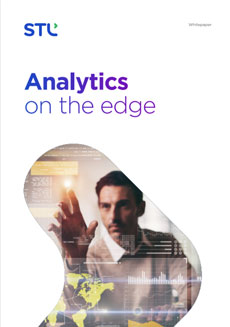The rise of edge computing
Nearly two-thirds of the global population will have Internet access by 2023. There will be 5.3 billion total Internet users (66 percent of the global population) by 2023, up from 3.9 billion (51 percent of the global population) in 2018. With the huge interest in digitalization across all industry verticals – 5G is a key technology. Edge computing is a crucial part of the 5G platform and provides a first-mover advantage for communication service providers in grabbing new business opportunities.
Edge analytics has become a major area of interest and investment in the telecom industry, driven by the need to improve user experiences as well as enable and support new business models. By 2023, 5G will make up around one-fifth of all mobile data traffic, where 25% of the use-cases will depend on edge computing capabilities.
…and the need for intelligent edge
Intelligent edge refers to the analysis of data and development of solutions at the site where the data is generated. Rather than constantly delivering data back to the central server, edge-enabled devices or nodes can gather and process data in real-time, allowing them to respond faster and more effectively. This technology reduces latency, costs, and security risks, thus making the associated business more efficient.



